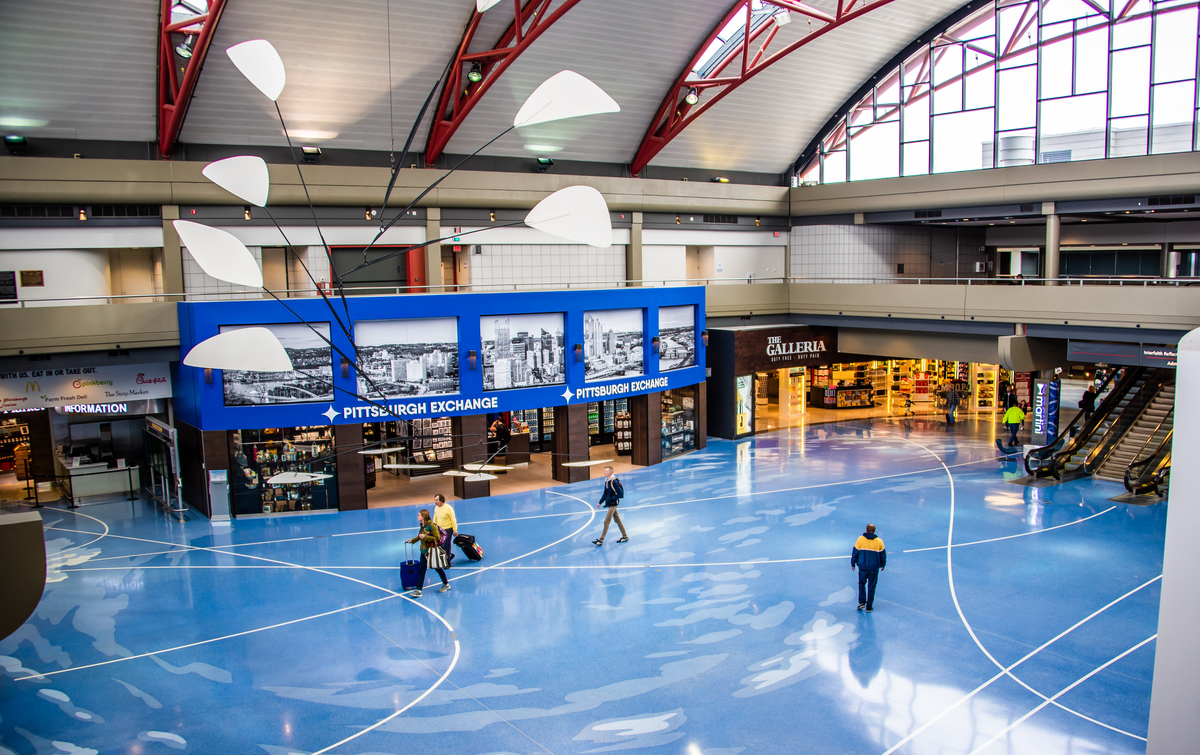Airports’ Unique Financial Structure Relies on Partnerships
Industry slowdown hits hard on budgets that don’t rely on tax dollars
By Jeff Martinelli
Published March 30, 2020
Read Time: 2 mins
The parking lots at Pittsburgh International Airport illustrate the economic impact the coronavirus pandemic has had on airports across the country.
Late last week, 1,700 cars sat scattered in three parking lots that have a total capacity of approximately 15,000. Meanwhile, just to the south of the parking lots and across a large field, 54 airplanes were neatly parked side by side waiting to be joined by more than 40 others by the end of the weekend.
READ MORE: Parked Planes Stack Up at U.S. Airports
As COVID-19 cases climb dramatically across the country, airlines are parking planes while cars fly out of the parking lots. Meanwhile, airports remain open, ready to do their part during this worldwide crisis.
“We’re open for business,” said Allegheny County Airport Authority CEO Christina Cassotis on the first of weekly conference calls with employees last week. “We’re open for business because we have to be. [Airports are] too important to the country’s infrastructure.”
READ MORE: Aviation Industry Gets Tens of Billions in Economic Stimulus Package
That is the main reason why $10 billion is designated to go to U.S. airports as part of the $2 trillion stimulus package that Congress passed on Friday. That money will go toward airport payrolls, keeping tarmacs open for crucial cargo deliveries and essential travel, and other necessities.
“Getting $10 billion is going to go a long way to help airports make their bond payments and to pay for other expenses that they had not anticipated having to pay,” Kevin Burke, president of Airports Council International—North America, told Airport Experience News.
Currently, it’s unclear exactly how that money will be distributed throughout the country’s network of airports, which operate in different ways in terms of finances.
Typically, airport operating budgets include no local tax money, but are funded by rates and fees charged to airport users. Those fees are classified in one of two ways: aeronautical revenue and non-aeronautical revenue.
Aeronautical revenue is pretty much what it says it is: revenue received for aviation purposes. These include airplane landing and parking fees, deicing fees, and gate leases.
The airport also collects a $4.50 Passenger Facility Charge (PFC) for every departing passenger. Revenue generated by PFCs—approximately $22 million in 2019—is tightly regulated and can only be used for FAA-approved projects.
Non-aeronautical revenue is everything else. Concessions, parking, office leases, real estate development—such as the Neighborhood 91 project—and natural gas drilling are all sources of non-aeronautical revenue that Pittsburgh International earns.
But with an estimated drop of 70 to 80 percent in traffic for 2020, and load factors as low as 9 percent this past week, making up the non-aeronautical revenue that depends on passengers spending money will be difficult, if not impossible. The federal aid will help make up the difference.
Despite the lower traffic resulting from the COVID-19 pandemic, Cassotis remains positive.
“We will be in a position to return to the new normal once the industry rebounds – and it will, because it always does,” she said to employees. “We see a way forward. We know that when the industry emerges, and because we’re such a critical part of it, of course we will be ready.”
Watch
This Next
Read
This Next






